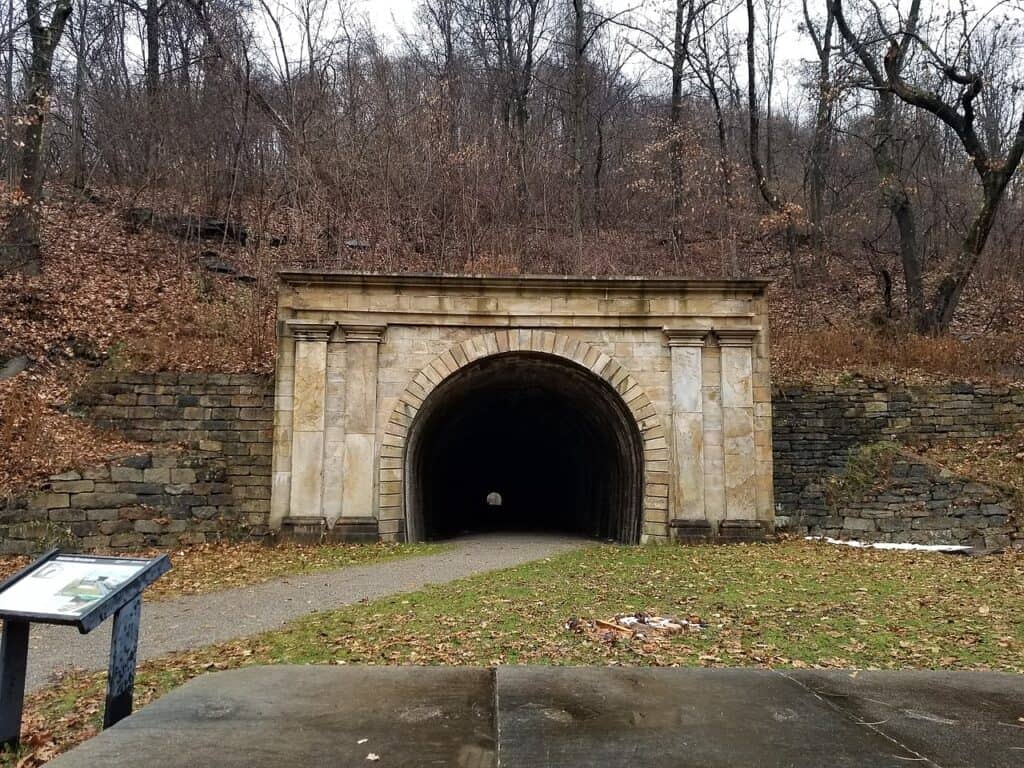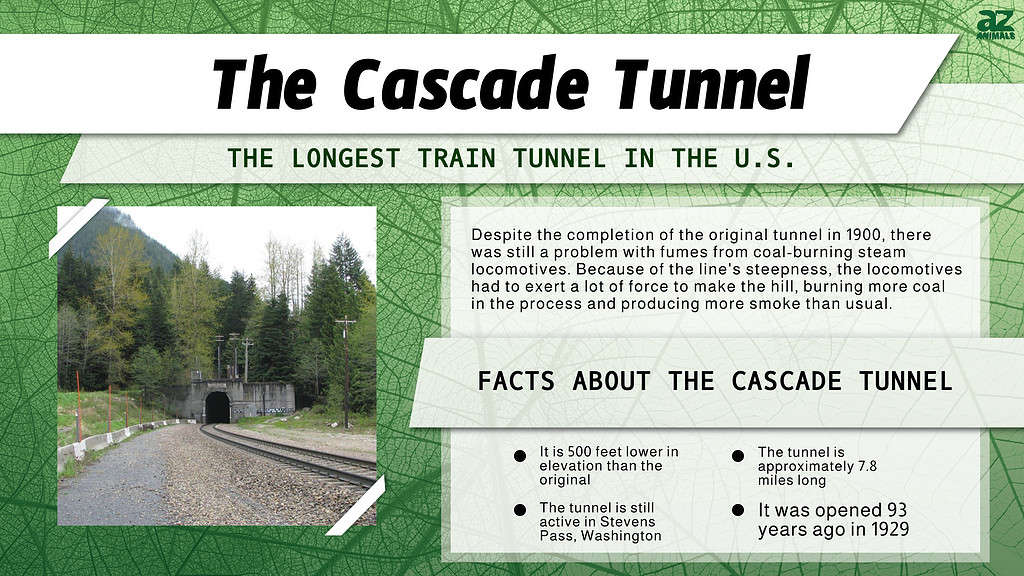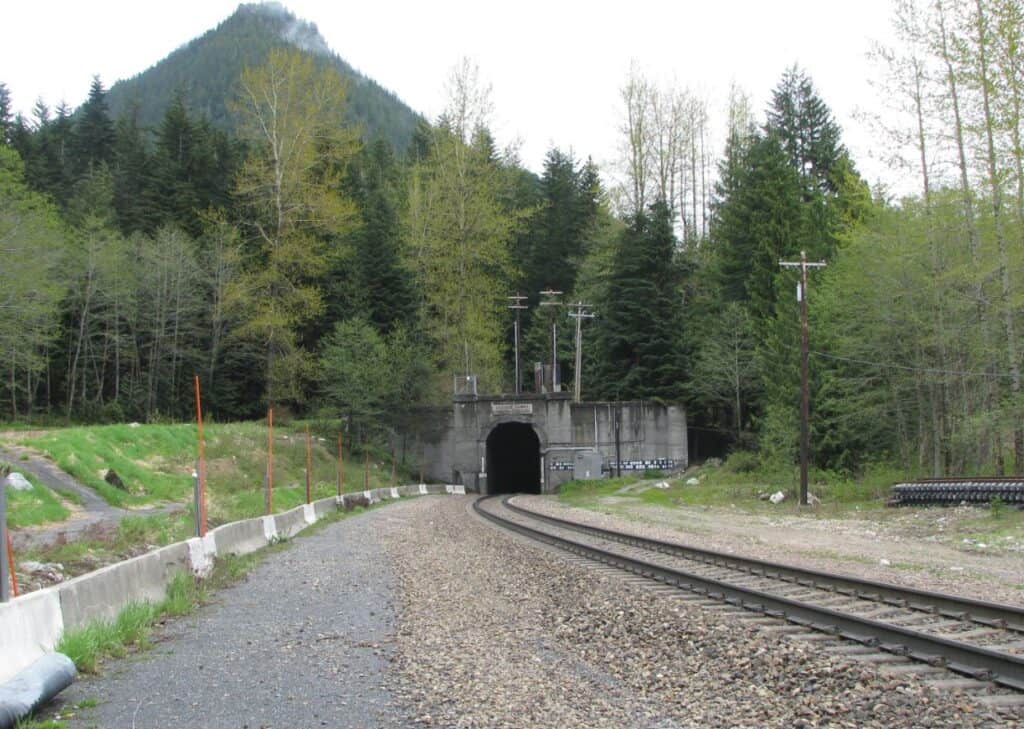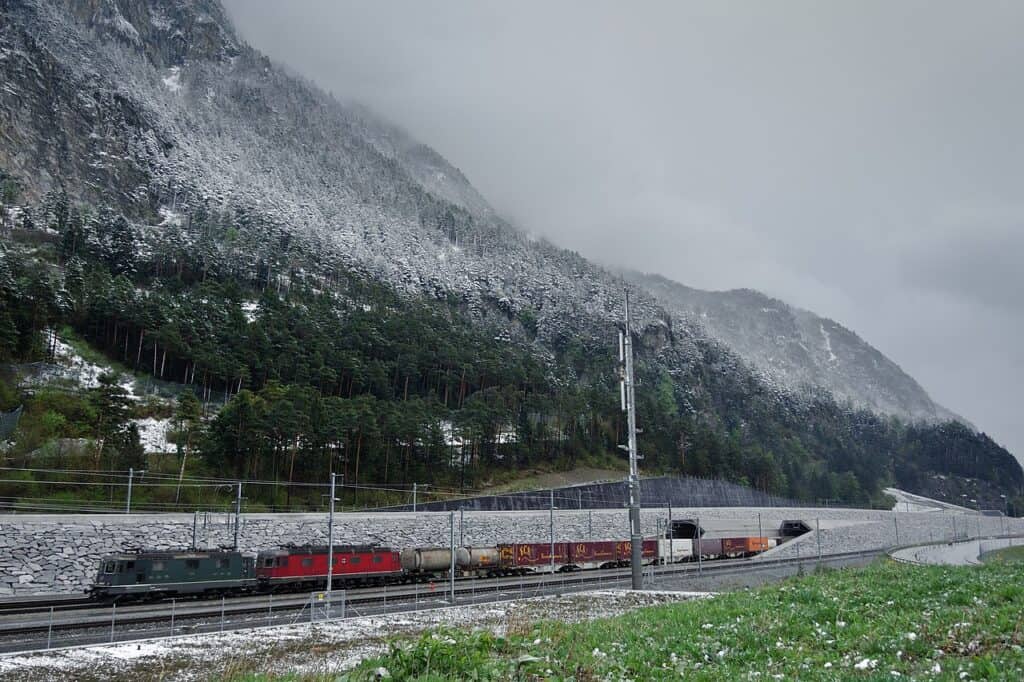Over the years, humans have come up with several ways to move around from place to place. Of all the travel options that exist, traveling by train is one of the oldest and most innovative. The first full-scale, functional train in the world was a railway steam locomotive built in the United Kingdom in 1804 by Richard Trevithick, a British engineer born in Cornwall. However, there had been constant use of wooden railroads, called wagonways, in the United States from as early as the 1720s.
The first public railway in the United States was the Leiper Railroad, which opened in 1810. However, this railway was closed after a while. Still, it was subsequently reopened as part of the Baltimore & Ohio Railroad, the first U.S. railway chartered for commercial transport of passengers and freight, which was completed in 1827 but opened in 1830.
Gradually, traveling by train became more popular in the United States, and even more railroads were built in almost every state of the country. There are several types of railways in the United States- underground, surface, mountain, tunnels, etc. What do you think the longest train tunnel in the United States is? Keep reading to find out all about it.
The Oldest Train Tunnel in the United States

The Staple Bend Tunnel is the oldest train in the United States.
©Coasterlover1994 / CC BY-SA 4.0 – License
The primary reason for the innovation of train tunnels was to guarantee trains safe passage across mountains and elevated plains and connect two or more places through a railroad. Because natural features like hills, mountains or rivers, buildings, and sometimes towns cannot be moved, experts needed to find a way for trains to pass safely with little to no damage.
The oldest train tunnel in the United States is the Staple Bend Tunnel. The tunnel is located in a town called Mineral Point in Pennsylvania. The Allegheny Portage Railroad started this tunnel’s construction in 1831 and finished in June 1833. Despite being the first railway tunnel in the United States, it was the third tunnel of any kind, the first two being for canals in other parts of Pennsylvania. The tunnel served its purpose for a while until it was closed in the 1850s, and it has not carried a train ever since.
The tunnel was made obsolete when an all-rail network replaced its network of canals and rails. As a commemorative gesture, the tunnel was listed as a National Historic Landmark in 1994 and can be visited at the Allegheny Portage Railroad National Historic Site. The National Park Service also just completed the tunnel restoration, and it is now open to cyclists and hikers.
The Longest Train Tunnel in the United States

The Cascade Tunnel is the longest train tunnel in the United States.
©University of Washington Libraries Digital Collections / public domain – License
Currently, the longest train tunnel in the United States is the Cascade Tunnel, which is approximately 7.8 miles long. The tunnel is still active in Stevens Pass, Washington, and was opened 93 years ago in 1929. The original tunnel’s construction started in August 1897 with John Frank Stevens as the principal engineer and was completed in December 1900 at around 2.6 miles long.

History of the Cascade Tunnel
Despite the completion of the original tunnel in 1900, there was still a problem with fumes from coal-burning steam locomotives. Because of the line’s steepness, the locomotives had to exert a lot of force to make the hill, burning more coal in the process and producing more smoke than usual. Also, the smoke made many passengers sick because the tunnel had inadequate ventilation. The engineers in charge of the project decided the easiest way to fix the problem was to electrify the tunnel.
A hydroelectric plant was built in 1907 to power the electric locomotives that were suggested as a solution. The Tumwater Dam, which was finished in 1909, supplied both freight and passenger trains with electricity for the trolley lines within the tunnel and was, at the time, the most significant hydroelectric project west of Niagara Falls. The new Cascade Tunnel utilized the system until 1956 when diesel-powered locomotives and improved ventilation rendered it ineffective. At that time, the power plant was shut down.

The new Cascade Tunnel was opened on January 12, 1929, and unlike the original, it is 500 feet lower in elevation.
©Seattleretro / CC BY-SA 3.0 – License
The electrification solution was completed in July 1909. However, the Wellington Disaster of 1910– one of the deadliest avalanches in U.S. history, necessitated the construction of the new Cascade Tunnel. Two trains headed for Seattle in February 1910 made it through the tunnel, but due to the harsh winter weather, they had to stop near Wellington, a railroad hamlet. Some passengers opted to trek out and reach safety after waiting for days when supplies were running low, and telegraph links had failed.
The trains were driven off the rails and into the river gorge below on March 1. An enormous avalanche that a rainstorm had set off struck those who remained inside the carriages. Around 96 passengers and crew members perished in the accident, but rescuers were able to pull 23 survivors from the snow and debris. Experts thought that a longer tunnel located at a lower altitude would lessen the risks associated with winter travel.
The people in charge of the project began construction on the new tunnel in December 1925, and it was completed in just over three years. The goal was to complete it by the winter of 1928–1929 to avoid having to perform more maintenance on the existing snow sheds. The new Cascade Tunnel was opened on January 12, 1929, and unlike the original, it is 500 feet lower in elevation.
Where Is the Cascade Tunnel Located on a Map?
The Cascade Tunnel in Stevens Pass, Washington, is located on the east side of Stevens Pass. To get there, take Highway 2 and turn onto Old Cascade Highway. Follow this road for about 4 miles until you reach a parking lot. The tunnel entrance is just a short walk from the parking lot. On a map, it can be found by searching for “Cascade Tunnel” near Stevens Pass or using coordinates 47.7435° N, 121.0986° W.
The Longest Train Tunnels in the World

The Gotthard Base tunnel in Switzerland is the longest tunnel in the world.
©Zacharie Grossen / CC BY-SA 4.0 – License
Despite being over seven miles long, the Cascade Tunnel is nowhere near the longest train tunnel in the world. Currently, the longest train tunnel in the world is the Gotthard Base tunnel in Switzerland. The 35-mile-long Gotthard tunnel was built to connect Genoa, Italy, to Rotterdam, the Netherlands, with high-speed rail. The tunnel is also the deepest in the world, reaching a depth of 2,300 meters.
Apart from the Gotthard, the Seikan tunnel in Japan is the second-longest train tunnel in the world. This tunnel is approximately 33.4 miles long. With a 14.5-mile submarine section, the Seikan tunnel was constructed 100 meters (328 feet) below the ocean’s surface. This tunnel has been open and in service since 1988.
On the list of the world’s longest train tunnels, the Channel Tunnel, measuring 31.4 miles long and straddling the borders of the UK and France, is the third. Additionally, this tunnel is the world’s longest undersea rail tunnel. It took nearly six years to complete this tunnel before it was finally opened for use in 1994.
The photo featured at the top of this post is © Seattleretro / CC BY-SA 3.0 – License / Original
Sources
- The Cascade Loop, Available here: https://www.cascadeloop.com/cascade-tunnel-longest-railroad-tunnel-in-the-us
- Rail Serve, Available here: https://www.railserve.com/stats_records/railroad_tunnels_bridges.html
- Mappr, Available here: https://www.mappr.co/longest-tunnels-in-the-world/
Thank you for reading! Have some feedback for us? Contact the AZ Animals editorial team.






